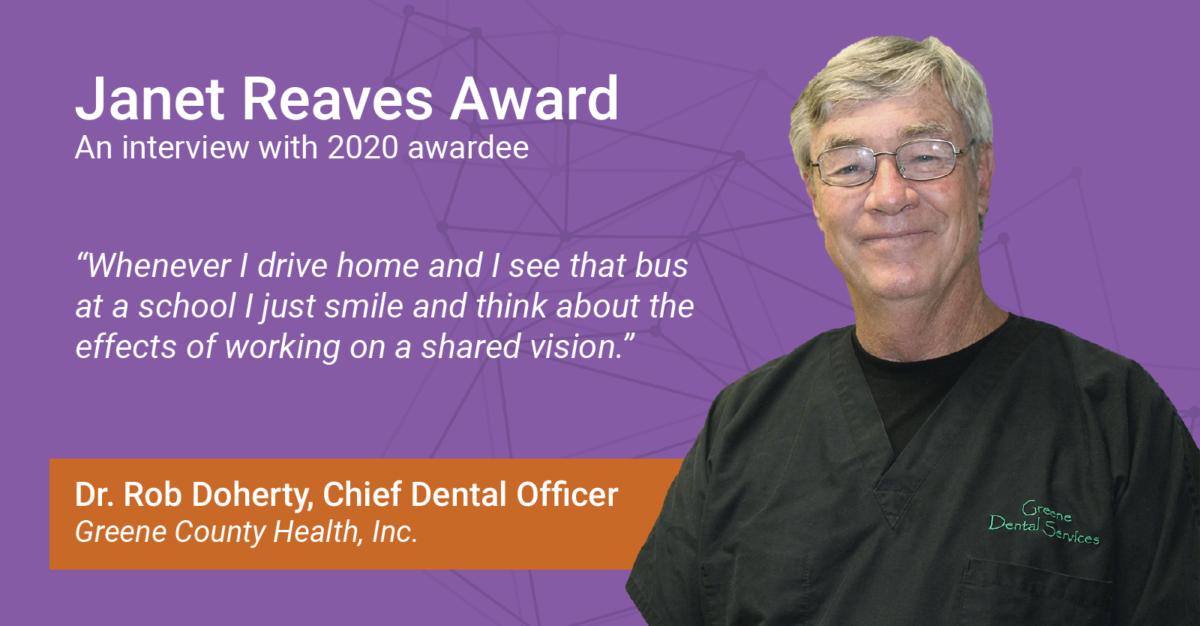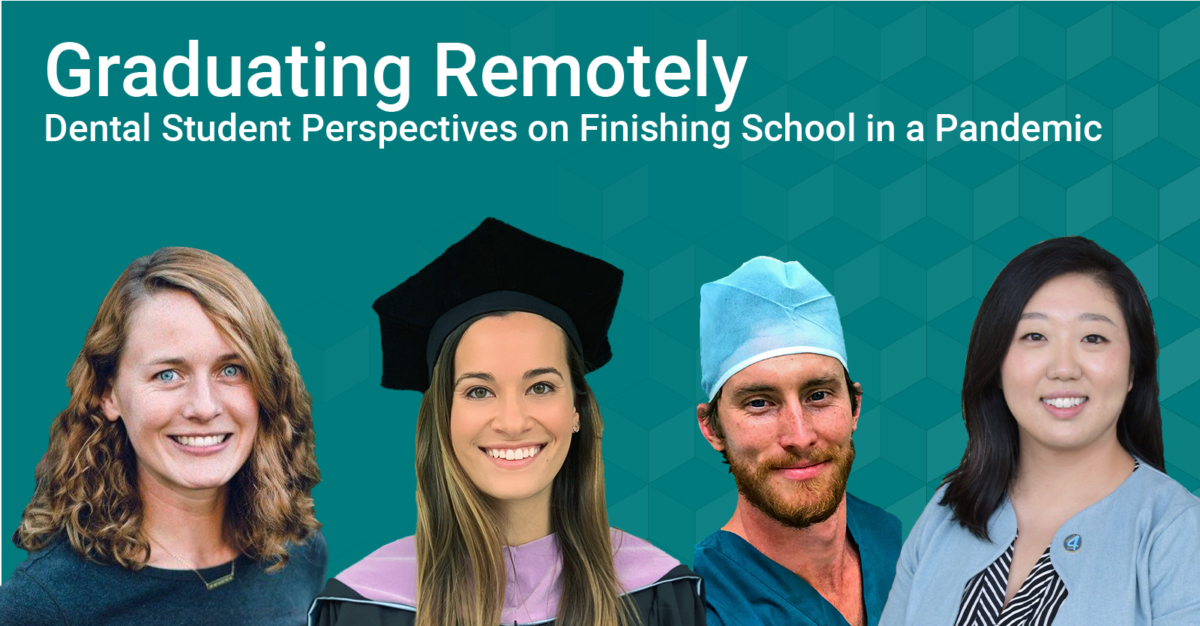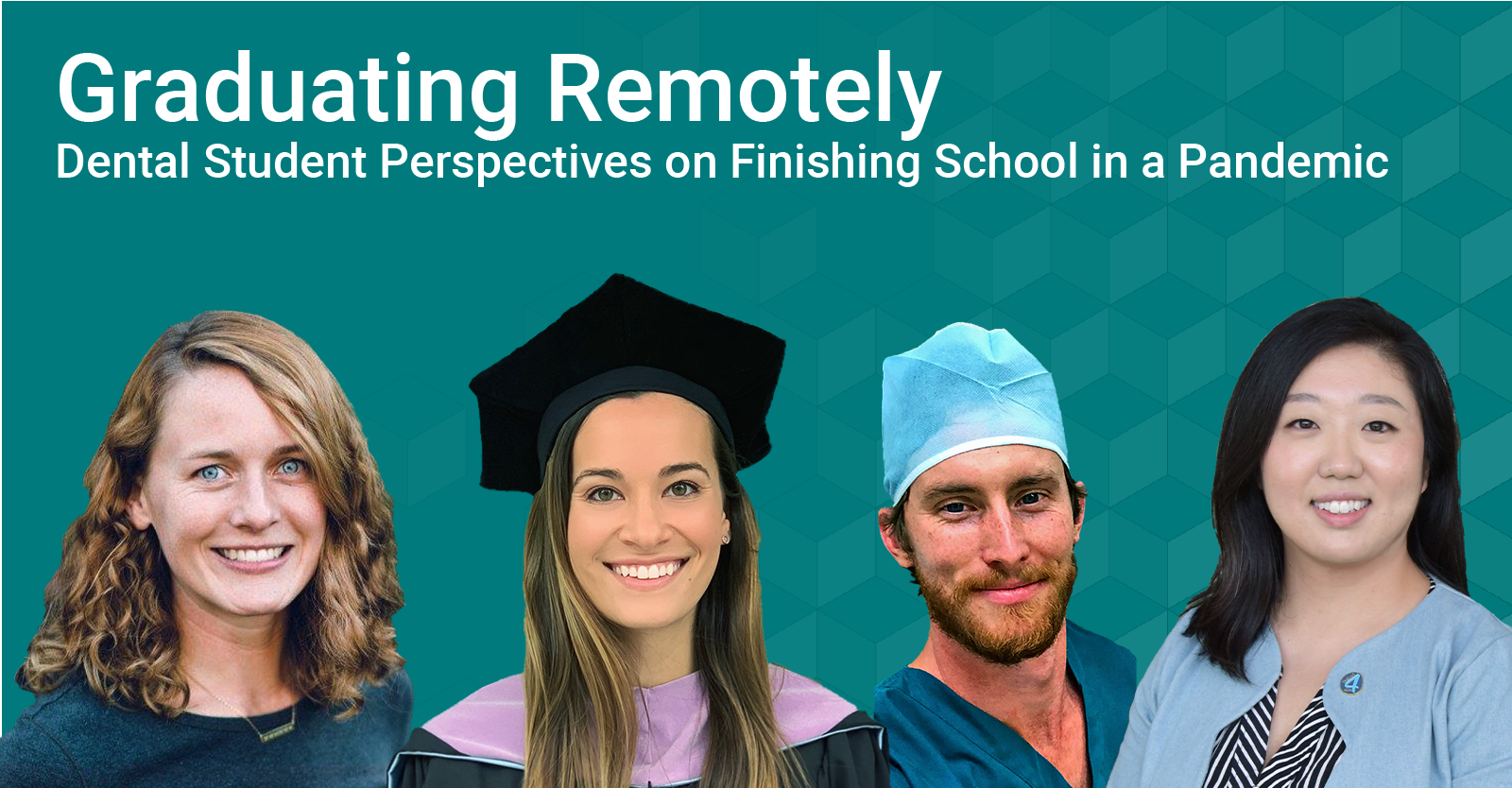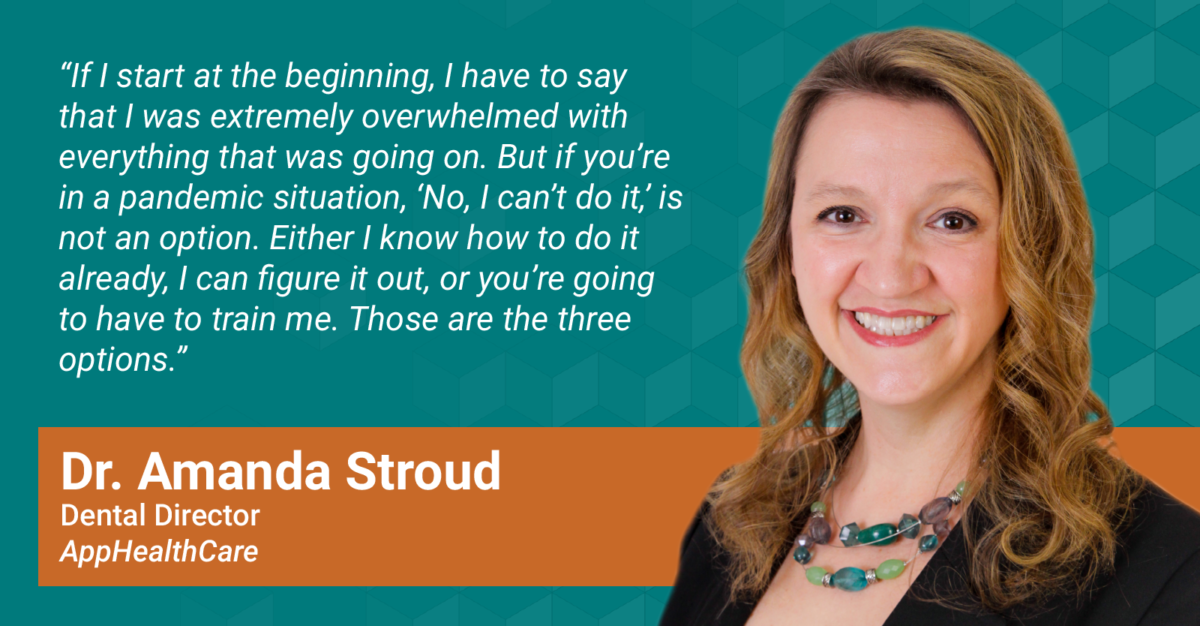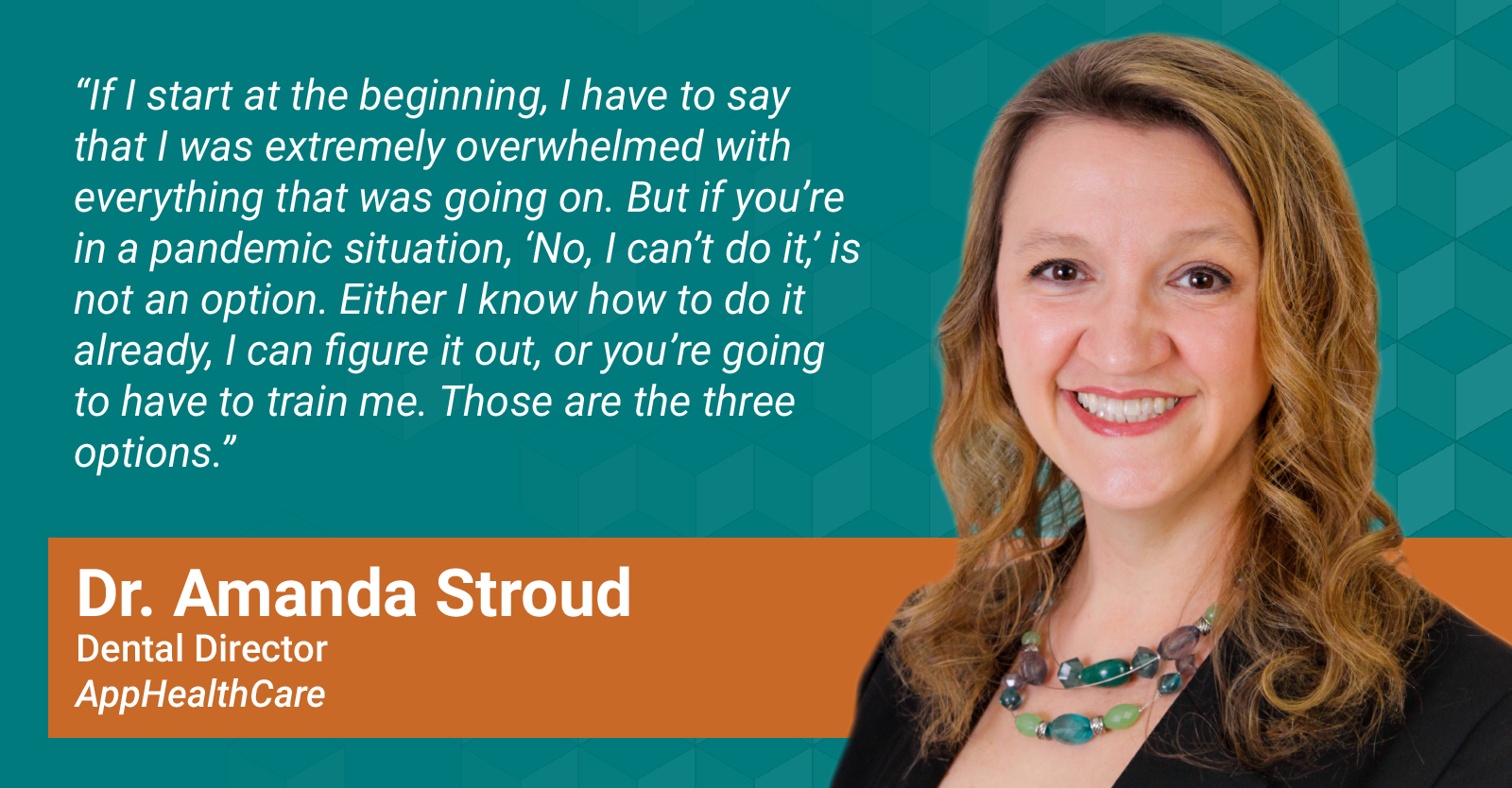“If I start at the beginning, I have to say that I was extremely overwhelmed with everything that was going on,” said Dr. Amanda Stroud, the dental director for AppHealthCare. “But if you’re in a pandemic situation, ‘No, I can’t do it,’ is not an option. Either I know how to do it already, I can figure it out, or you’re going to have to train me. Those are the three options.”

When North Carolina began to shut down due to the COVID-19 pandemic, Dr. Stroud and her team had just started the spring session of their school-based oral health care program. Every year, AppHealthCare spends four months in schools—two in the fall and two in the spring—visiting every school in Ashe, Alleghany, and Watauga Counties.
“When we started to hear rumblings about schools closing, we had a paperwork day to figure out what we could do from the office instead,” said Dr. Stroud. “Then, I got a call from our health director, Jennifer Greene, asking me to join the COVID-19 team meeting.”
Dr. Stroud then joined the army of public health professionals across the country doing their best to prepare their communities and health care systems to withstand the COVID-19 pandemic.
Even with non-urgent dental work postponed, AppHealthCare has been able to keep its entire dental workforce employed, reassigning dentists, hygienists, and office staff to help triage patients, call in prescriptions, and reach out directly to at-risk communities.
“I think a lot of people launched into this not really knowing how to face a pandemic,” said Dr. Stroud. “We just had to realize that we do have some of the tools and we need to be resourceful to figure out the rest.”
For Dr. Stroud, a typical day for the first few weeks of COVID-19 was dominated by phone conferences and planning.
“When this thing first broke out, we had conferences with all three counties every day. That’s calls with incident management teams, community partners, all these groups,” said Dr. Stroud. “We’re looking at Armageddon-type things—I hate to say it that way—but it’s setting up plans for a temporary morgue, looking at what happens if the food chain supplying the hospital and prison goes away. What’s our backup plan, and what’s the backup to the backup plan?”
Now that those plans are in place, Dr. Stroud is working to reach out to vulnerable communities, making sure they have the resources and knowledge to stay as safe as possible.
Christmas tree farming is an important industry in Ashe, Alleghany, and Watauga Counties, with workers coming from across the U.S. and outside of the country for the growing season. It became essential that Dr. Stroud and her fellow health care workers assist growers and farmworkers in taking steps to reduce the risk of catching or spreading COVID-19.
“Fortunately, we have been able to get out a lot of information to the people coming in,” said Dr. Stroud. “We have been working with the North Carolina State University agriculture folks to get out resources in English and Spanish with handwashing information, making sure they’re staying six feet apart, and making sure they know what the signs and symptoms are.”
Migrant communities, who systemically lack access to health care resources, are at an especially high risk of both contracting COVID-19 and not being able to seek health care when they need it.
“We’re really trying to alleviate the fear that many have of seeking medical care,” said Dr. Stroud. “A lot of migrant workers are worried that they’ll be targeted. Trying to overcome that has been another thing we’re working on, just trying to ensure the migrant population that we are really here to help.”
Dr. Stroud said that farm owners have been receptive to working with the public health departments to improve farmworker safety.
“I think most of them realize how detrimental this could be, to their own health, the health of their families, and the health of their business and the people working for them,” said Dr. Stroud.
Sandra Rodriguez, the assistant director of Student Action with Farmworkers, said that farm owners do have a lot of stake in helping worker communities stay healthy and safe. But at the end of the day, putting safe practices in place is incredibly difficult, if not impossible.
“It’s just a very difficult growing season for the people in the field,” said Rodriguez.
In a normal season, migrant farmworkers face many barriers to accessing health care. In Rodriguez’s view, COVID-19 has compounded those barriers and shed light on other dangerous conditions that workers often face.
“These houses that migrant workers live in are usually in poor condition. They often consist of a large room with many beds, a small space to eat, and a small number of bathrooms,” said Rodriguez. “How do you actually quarantine in that kind of situation?”
Rodriguez said that while new housing obviously can’t go up overnight, it is time to start the process of addressing the migrant farmworker housing crisis.
“With the current living situation, the concern is that if just one worker gets the virus, it will spread very quickly to everyone else,” said Rodriguez.
“I don’t think we can eliminate interaction, but we have been working with the growers to keep groups together,” said Dr. Stroud. “So that’s keeping farmworker Pod A from Home A together, working together in the field and not interacting with farmworker Pod B, from Home B, trying to mitigate the spread that way.”

“I’m a dental provider. I have something to offer, but this whole thing has been a huge learning experience, too. Not just learning what the other departments do in their daily lives but learning how to drop everything and turn on a dime and say, ‘hey, I can help you with this,’” Dr. Stroud said.
Beyond extra human capacity for preparation and outreach, Dr. Stroud’s dental office has also been able to provide a lot of relief, especially in the very beginning of the pandemic response.
“Since we transitioned to telemedicine and closed our school program, we were able to shift supplies and be a backup source of PPE (personal protective equipment) for the other departments and agencies throughout the area,” said Dr. Stroud.
For Dr. Stroud, the bonds created between the different agencies who have come together to face the COVID-19 pandemic is one silver lining.
“It’s really important, especially for small counties, to realize that we can group together and lean on each other even more than we have in the past,” said Dr. Stroud. “I include dental under the umbrella of medical providers. I think we were already moving toward more integration, but I hope that with this we realize that there is even less of a separation than before.”
Beyond the strain of re-working an entire medical system to meet the immediate challenge, the well-being of those providing care is also an important topic of concern. Faced with more exposure to COVID-19, many health care providers are finding themselves forced to isolate from loved ones because they are at greater risk of exposure to the virus.
“I miss seeing my family,” said Dr. Stroud. “My parents live just 35 minutes from here, and I haven’t seen them in a few months now. We also had a death in the family. My husband’s grandmother passed away during all this on the opposite side of the state, and I didn’t go to the funeral.”
From us at NCOHC, thank you to all of those like Dr. Amanda Stroud and Sandra Rodriguez who are working hard to meet vulnerable communities’ needs during this time.
NCOHC is a program of the Foundation for Health Leadership & Innovation. For more information and to stay up to date, subscribe to the NCOHC newsletter. If you are interested in becoming an NCOHC member, you can also fill out our membership form. It’s free!

